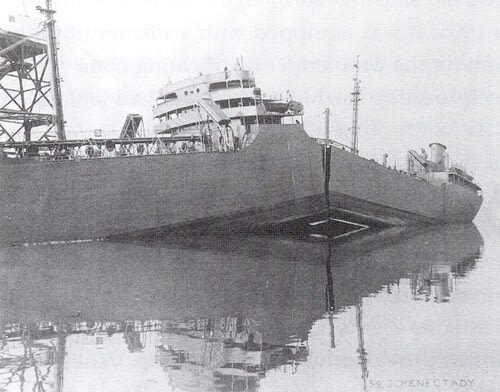Yes, speaking of poor material choice in an engine part, my wife had a new 2000 Cadillac Catera. Now this was the first year of the Catera (they don't use that name anymore, I think the equivalent model is the CTS or perhaps the CT5) and it was actually a rebadged German-made Opel Omega. Now this was the first co-called 'luxury' car that we had ever owned (my wife now drives a 2018 Mercedes C300) and it was a fun car to drive as it felt like a German sports car, good gas mileage and brakes that could stop on a dime. And it was a great car to drive out on the open road for long trips. This was in the days before MP3 players and it had a 12-disc 'jukebox' CD-changer in the trunk. I had my 12-disc cartridge and my wife had hers and on a long trip we always had good music to listen to (this was also before satellite radio and in those days, out in most parts of the country, it seemed like every other station was playing Rush Limbaugh). The only problem was that it needed about 25 more horsepower as it had an automatic transmission, AC and about 500 pounds of extra stuff like insulation and other things not found on an Opel Omega in Germany (they had to 'Americanize' it).
Anyway, we had had the car for little over two years when I was driving it one day (luckily I was stopped at a light waiting to turn left) when the engine just stopped. It not only stopped, it totally seized-up, like a rock. Now this was a V6 with dual-overhead cams, driven by a serpentine 'cog' timing-belt arrangement, which was fine. The problem was that this belt arrangement was inside that same housing as was the serpentine multi-V belt used to drive the engine accessories (AC, alternator, power-steering, etc). Now the face of the pulley on the belt-tensioner for the accessory belt had a thick layer of some sort of elastomer, perhaps polyurethane. Anyway, this material apparently had dried-out, and it eventually came of causing the accessory belt to come off. Now under normal circumstances, this would not have been a big deal, except that the belt got caught in one of the 'cog' wheels on the overhead cam drive causing the timing-belt to either break or jump off, thus causing the engine to seize. Now Cadillac was very good about fixing it, totally under warranty, just that it took about a month as they had to get a new engine from Germany because apparently when the cams stopped moving, the engine didn't, and at least one valve collided with a piston. Apparently what had happened was that the elastomer, or the adhesive that bound it to the tensioner pulley was not suitable for a hot, dry climate like SoCal, but rather more for what you'd expect to find in Europe (about a month after we got the car back we got a recall notice to replace the pulley, of course by then we already had a new pulley, courtesy of the new engine). It had taken about two years before they started to come apart. When I asked the service manager about this the next time we had the car in for service, he mentioned that yes, this had first been noticed by owners in places like Arizona, New Mexico and Nevada, but that ours was one of only a few incidents in SoCal (but we had driven the car to Texas at least twice and once to Michigan) but that it was rare that the failed accessory belt caused the timing belt to come off/break, however, the new engine now had a 'baffle' between the two belts.
John R. Baker, P.E. (ret)
EX-'Product Evangelist'
Irvine, CA
Siemens PLM:
UG/NX Museum:
The secret of life is not finding someone to live with
It's finding someone you can't live without


